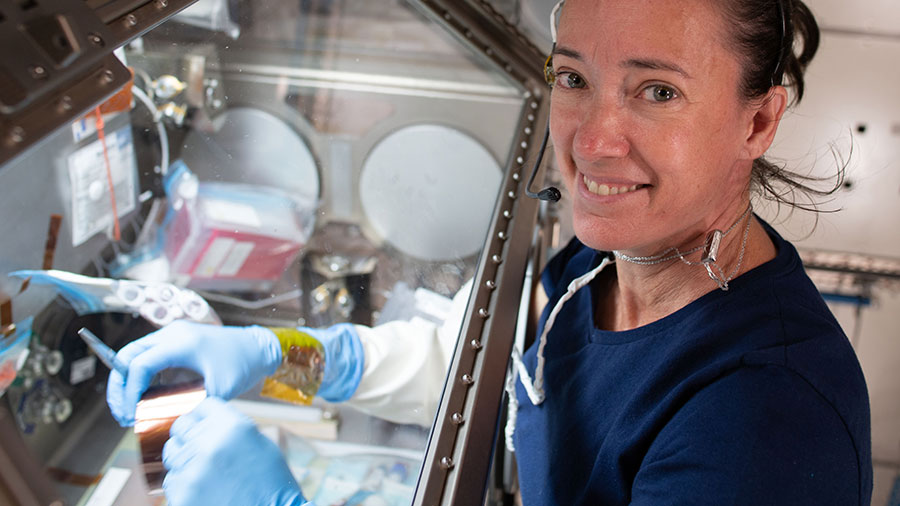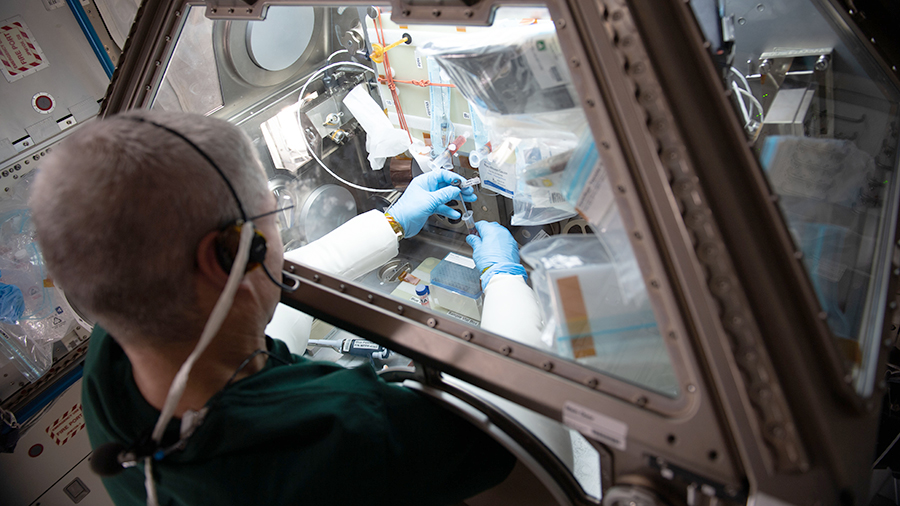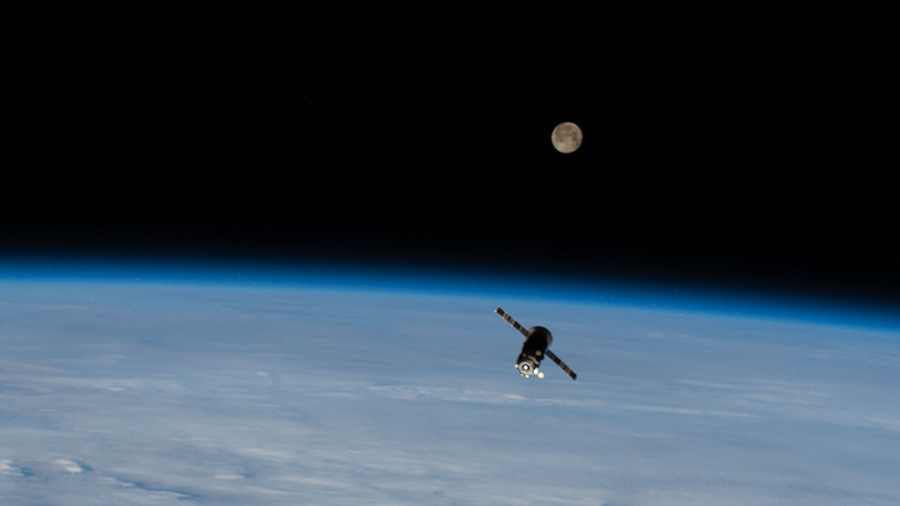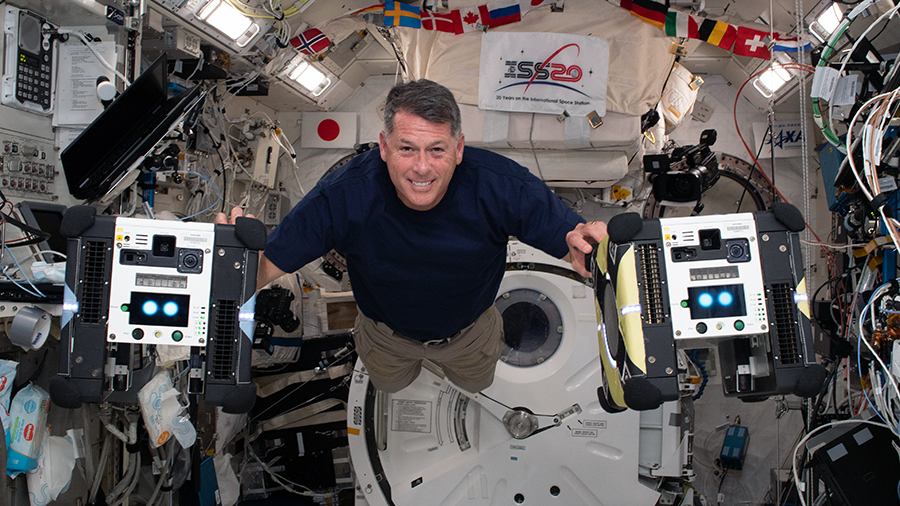Immune System, Eye and Ear Studies Continue Aboard Station

Human research continued full speed ahead on the International Space Station today as the Expedition 65 crew researched the immune system and conducted eye and ear checks.
The Celestial Immunity investigation has been under way all week inside the Kibo laboratory module from the Japan Aerospace Exploration Agency. NASA Flight Engineers Mark Vande Hei and Megan McArthur once again treated donor cell samples inside the Life Sciences Glovebox which are compared to samples on Earth. Observations may provide insights into new vaccines and drugs and advance the commercialization of space.
Vande Hei later had his eyes checked at the end of the day by NASA Flight Engineer Shane Kimbrough using near-infrared medical-imaging for detailed views of his retina. Kimbrough also worked throughout the day replacing life support components inside a U.S. spacesuit before organizing Russian spacewalk tools.
Ear checks were on the schedule on Wednesday with Kimbrough, ESA Flight Engineer Thomas Pesquet and station Commander Akihiko Hoshide taking a hearing test using specialized audio software. The three astronauts individually took the hearing assessment isolated in their private crew quarters to block out external station sounds.
Hoshide began the morning collecting and stowing his urine samples before spending the rest of the day on lab maintenance and inventory tasks. Pesquet demonstrated a simple heat transfer experiment for kids. He then checked out the immersive Sidekick device that displays high-definition holograms to assist crews with science and maintenance tasks.
Veteran cosmonaut Oleg Novitskiy worked on Russian maintenance tasks and continued packing the U.S. Cygnus space freighter ahead of its departure in a few weeks. First time space-flyer Pyotr Dubrov had orbital plumbing duties Wednesday morning and checking station cameras and ventilation systems.
The Water Processor Assembly (WPA) in the Tranquility module has been powered off due to a possible leak. This hardware is used to recycle water from multiple sources into clean, drinkable water for crew members aboard the International Space Station.
The crew is in no danger and has multiple spare parts aboard to begin the repair process which is expected to be complete early next week. Enough water is stored on the space station to provide the crew with the necessary consumables for several months if required.
The space station serves a vital role in testing and maturing life support technologies that will be required for future missions to the Moon and Mars. Repairs provide invaluable data to engineers refining these systems for use in future spacecraft and missions.
Mark Garcia
Powered by WPeMatico







